Volcano Snail: Uncovering the Mysteries of a Unique Species

The intriguing volcano snail, also known as Chrysomallon squamiferum, is a deep-sea gastropod that thrives in some of the most extreme conditions found on Earth. Dwelling near hydrothermal vents in the Indian Ocean, these unique creatures have captured the attention of scientists and marine enthusiasts alike. With their daring lifestyle and fascinating adaptations, volcano snails truly showcase the incredible wonders of nature.
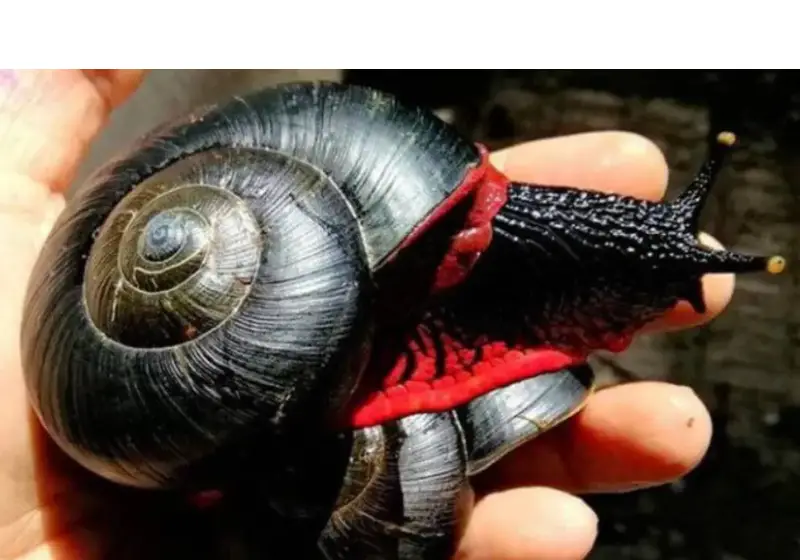
As you venture to the depths of the Indian Ocean, you’ll find hydrothermal vents emitting boiling water, toxic chemicals, and temperatures reaching up to 750 degrees Fahrenheit. In this seemingly inhospitable environment, the volcano snail thrives with unique adaptations. One such adaptation is their ability to draw iron sulfide from the surrounding environment to develop a protective armor that envelops their soft interior.
While exploring this fascinating species, you’ll learn how the volcano snail relies on a special gland to process bacteria for sustenance rather than ingesting food in the traditional sense. This astounding gastropod serves as an impressive reminder of the incredible resilience and adaptability of life on our planet, even under extreme conditions.
Contents
Table of Contents
Understanding the Volcano Snail

You might encounter the fascinating Volcano Snail in exploring unique marine species. Known as the Scaly-foot Gastropod or scientifically named Chrysomallon squamiferum, this remarkable creature is known for its distinct shell and living in extreme environments.
The Volcano Snail’s shell is unique because it’s composed of iron sulfide, drawing from its environment to develop a “suit of armor” that protects its soft inside source. This iron sulfide shell, combined with the presence of iron scales, makes the Volcano Snail truly one of a kind.
Another interesting aspect of the Volcano Snail is its diet. It primarily consumes algae and other microorganisms that grow on rocks or surfaces in its habitat source. The snail obtains sustenance from bacteria processed in a large gland instead of “eating” traditionally.
Living in temperatures of up to 750 degrees Fahrenheit, the Volcano Snail thrives in the harsh conditions produced by hydrothermal vents source. These vents form when water seeps into cracks, reaches volcanic molten rock, and produces steam with hot gases that eventually vent out (source).
As you study this unique species, it’s crucial to remember its endangered status and conservation efforts. The Volcano Snail’s limited habitat range and vulnerability to deep-sea mining activities for precious metals have resulted in it being classified as an endangered species by the International Union for Conservation of Nature (IUCN) source. To ensure the survival of this fascinating gastropod, ongoing research and conservation efforts are vital.
With this knowledge, you can better appreciate the Volcano Snail’s unique characteristics, deep-sea habitat, and importance for conservation.
The Genus: Chrysomallon
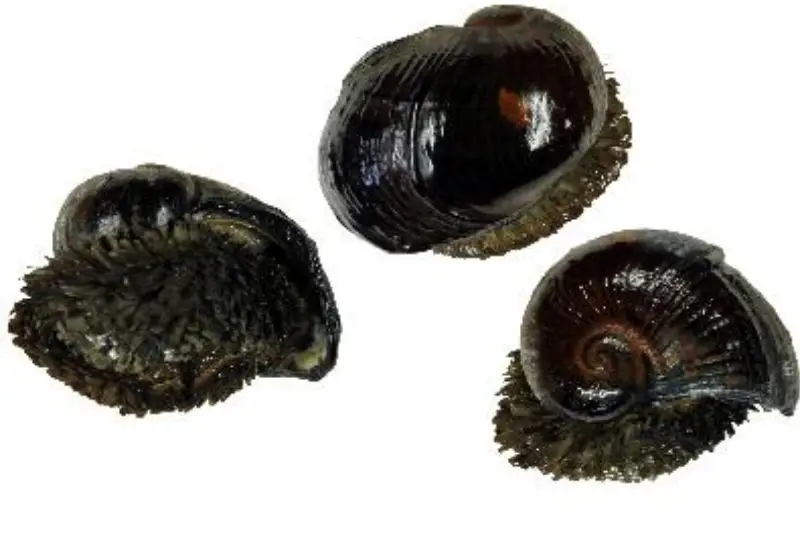
Chrysomallon is a unique genus of deep-sea snails, with Chrysomallon squamiferum, also known as the volcano snail, being its sole species. These snails inhabit extreme environments, particularly deep-sea hydrothermal vents in the Indian Ocean off the Eastern and Southern coasts of Madagascar. They have been found in the Kairei, Solitaire, and Longqi vent fields.
You might find it interesting that Chrysomallon derives from Ancient Greek and translates to “golden-haired.” This is because the snail’s shell contains pyrite, a compound exhibiting a golden color2. The Chrysomallon squamiferum has fascinating adaptations that allow it to thrive in these harsh deep-sea environments.
The unique feature of the volcano snail is its ability to sequester iron metal ions, which form an iron sulfide coating on its shell, along the sides of its body, and on parts of its foot3. This protective layer is one factor that makes the Chrysomallon genus stand out among other gastropods.
Despite being a wonder of nature, Chrysomallon squamiferum faces threats to its survival. The International Union for Conservation of Nature (IUCN) has classified it as an Endangered species. Factors such as human activities, changes in temperature, and geological events at the hydrothermal vents contribute to their declining population.
You might also be fascinated to know that in 2020, researchers at the Hong Kong University of Science and Technology decoded the genome of the volcano snail for the first time in history5. This groundbreaking research can potentially help us gain further insights into the survival mechanisms and unique adaptations of the Chrysomallon genus.
Adaptation and Evolution
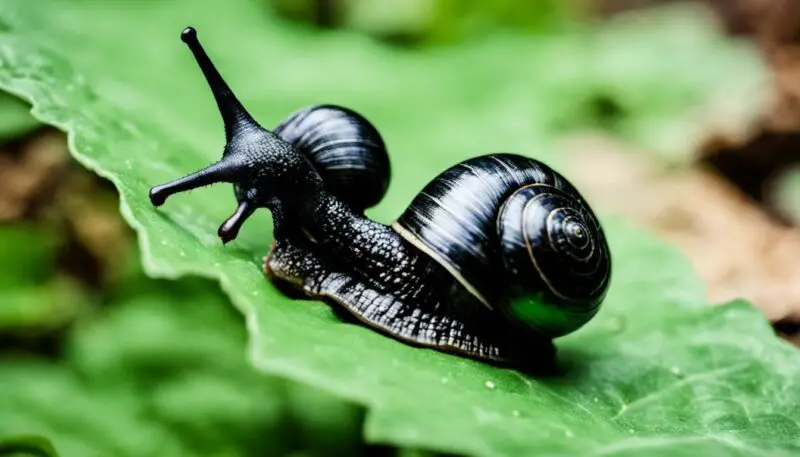
The volcano snail or scaly-foot gastropod has evolved remarkable adaptations that allow it to thrive in extreme deep-sea environments. These hydrothermal vents are known for intense pressure, scorching temperatures, and high levels of toxic chemicals.
One of the most significant adaptations is the snail’s unique shell, which incorporates iron sulfides, providing added strength and protection. This enables the volcano snail to withstand the harsh conditions in which it lives and offers protection from predators. The iron sulfide shell is so unique that it’s the only known gastropod that possesses it.
In addition to its shell, the volcano snail has evolved a specialized foot with scales made of iron sulfides. These scales, which give the snail its “scaly-foot” nickname, serve as an added defense against potential predators. These adaptations are crucial for the snail’s survival in high-pressure deep-sea environments.
Another fascinating aspect of the volcano snail’s adaptation and evolution is its relationship with bacteria. The snail relies on symbiotic bacteria to produce organic nutrients through a process known as chemosynthesis. This process allows the snail to obtain sustenance from the chemicals released by hydrothermal vents, vital for survival in harsh, nutrient-poor environments.
Unfortunately, the volcano snail is currently classified as endangered. The very environment in which it thrives, the deep-sea vents, is severely affected by metal mining and climate change. Consequently, the delicate ecosystems around these vents experience ongoing destruction, placing the volcano snail at risk.
Adapting to extreme environments, the volcano snail showcases a perfect example of evolutionary processes in action. Its unique iron sulfide shell and specialized adaptations allow it to survive in challenging deep-sea hydrothermal vents. However, it’s crucial to address the threats affecting its habitat to ensure the survival of this fascinating gastropod and the delicate ecosystem it calls home.
Habitat and Distribution

The volcano snail, also known as the scaly-foot gastropod (Chrysomallon squamiferum), can be found in deep-sea hydrothermal vents in the Indian Ocean. This unique creature thrives in extreme environments where most other marine life would struggle to survive. Their habitat mainly consists of the Kairei hydrothermal vent and Longqi vent fields, located along the Central Indian Ridge1.
As a species native to the Indian Ocean Biogeographic Province, the volcano snail is specifically adapted to withstand the harsh conditions around hydrothermal vents. These environments are characterized by high pressure, extreme temperatures, and a rich source of minerals. The snail’s ability to live in such conditions has earned it a reputation for being nature’s toughest gastropod2.
It’s important to note that the volcano snail’s limited distribution puts it at risk. Classified as an Endangered species on the IUCN Red List3, the snail faces potential threats to its habitat, such as deep-sea mining and climate change.
While its habitat may seem remote and inaccessible, preserving these unique ecosystems is essential for the survival of the volcano snail and other deep-sea hydrothermal vent organisms. By understanding the importance of maintaining these habitats, you can appreciate these marine creatures’ incredible resilience and adaptability.
Volcano Snail Physiology

The Volcano Snail, scientifically known as Chrysomallon squamiferum, boasts a unique physiology that allows it to thrive in extreme environments. Exploring its foot, exoskeleton, heart, digestive system, esophageal gland, calcium carbonate composition, and iron shell highlights the remarkable adaptations of this fascinating creature.
Starting with its exoskeleton, the Volcano Snail possesses a protective armor made of iron sulfide. This extraordinary feature is derived from the snail absorbing mineral deposits in hydrothermal vents within its habitat, creating an iron shell to shield its soft body from harsh conditions.
The snail’s foot is another intriguing aspect of its physiology. The foot is covered in iron-plated scales, which allow it to anchor itself to the surfaces around the hydrothermal vents. These iron scales also provide an extra layer of defense against potential predators.
Utilizing the esophageal gland and a highly specialized digestive system, the Volcano Snail can gain sustenance in unconventional ways. Since its surrounding environment lacks ample traditional food sources, it relies on chemosynthetic bacteria to metabolize chemical compounds from the hydrothermal vents. The snail absorbs the bacteria’s nutrients through its esophageal gland.
While many mollusks build their shells from calcium carbonate, the Volcano Snail has a unique shell composition. In addition to the iron sulfide, it has a layer of calcium carbonate underneath. This provides an extra layer of insulation and protection, allowing it to withstand temperatures up to 750 degrees Fahrenheit.
Your understanding of the Volcano Snail’s physiology would not be complete without considering its heart. Though little information is available about its specific cardiac function, it’s essential to acknowledge that the snail’s heart, like other gastropods, plays a crucial role in circulating hemolymph or blood throughout its body. Thus, it supports the incredible survival strategies of this gastropod in its extreme environment.
Special Features of the Scaly-foot Gastropod

The Scaly-foot Gastropod (Chrysomallon squamiferum) is a unique deep-sea hydrothermal-vent snail adapted to extremely harsh environments. This marine gastropod mollusc features a variety of special characteristics that enable it to survive in its challenging habitat.
Firstly, the Scaly-foot Gastropod is known for its distinctive armor, which consists of chitinous sclerites arranged in overlapping scales. These scales cover its foot and provide robust protection against potential predators, such as crabs source. This iron-infused armor is strong and flexible, allowing the snail to move around effectively in its environment.
Another amazing adaptation is the Scaly-foot Gastropod’s reliance on symbiotic bacteria for its nourishment. These bacteria live inside the snail’s body and utilize the chemical energy from hydrothermal vents to create organic material (source). In this mutually beneficial relationship, the snail provides a home for the bacteria, and in return, the bacteria supply the snail with essential nutrients.
Living in the deep sea also means the Scaly-foot Gastropod has to endure immense atmospheric pressure. While most organisms would find this pressure unbearable, the Scaly-foot Gastropod thrives by having a strong shell made of iron sulfide source. It is found at around 2,780 meters (1.73 miles) in the Indian Ocean source.
As you can see, the Scaly-foot Gastropod is a fascinating creature with numerous special features. Its extraordinary armor, symbiotic relationship with bacteria, and ability to withstand extreme pressure make it well-equipped for life in the deep sea.
Threats and Conservation Efforts

Volcano snails, or Chrysomallon squamiferum, are fascinating creatures that live in geothermal areas surrounding volcanic regions. However, they are facing multiple threats that put their survival at risk. The primary threat to these snails is deep-sea mining, which targets mineral-rich hydrothermal vents where volcano snails reside in.
This activity severely disrupts their habitat, leading to a significant decline in their population in recent years. Because of this, the International Union for the Conservation of Nature (IUCN) has listed the volcano snail as an endangered species.
Several conservation efforts are being made to protect the volcano snails and their unique ecosystem. Research expeditions, such as those conducted by RV Kairei and RV Da Yang Yi Hao, play an essential role in studying the volcano snails’ habitat and increasing our understanding of their ecological importance. By gathering valuable data on deep-sea ecosystems, scientists and conservationists can advocate for better protection policies and educate the public on the need for conservation.
Additionally, various organizations are working to develop sustainable practices that minimize the impact of deep-sea mining on both the snails and their surrounding ecosystem. International regulations, such as those established by the International Seabed Authority (ISA), strive to balance exploiting valuable mineral resources and preserving delicate deep-sea ecosystems like the ones inhabited by volcano snails.
In summary, the primary threat to volcano snails is deep-sea mining, which disrupts their habitat and endangers their survival. To address these challenges, researchers and conservationists are working together to study their unique ecosystems, advocate for better protection policies, and develop sustainable mining practices.
By remaining confident, knowledgeable, and neutral in our approach to these issues, you can join the efforts to protect these incredible creatures and their distinctive environment.
Diet and Predators

The diet of the volcano snail, scientifically known as Chrysomallon squamiferum, is unique and has managed to capture the attention of scientists and nature enthusiasts. Unlike many other organisms, this deep-sea hydrothermal-vent snail does not need to feed on other creatures. Instead, it relies on bacteria that reside in a special organ within its body, which provides the energy it requires for survival.
This symbiotic relationship between the bacteria and the snail is believed to have been in place for a long time, making their diet exceptional.
When it comes to predators, the volcano snail encounters multiple threats. Since their habitat is deep-sea hydrothermal vents, only specific marine creatures can reach and prey on them. One such predator known to feast on the volcano snail are crabs. These crabs have specific adaptations that allow them to thrive in the harsh environment of the deep sea, making them formidable predators for the volcano snail.
In addition to crabs, other unidentified deep-sea creatures could hunt the elusive volcano snail. However, it is essential to remember that the information on these predators is limited, as researchers still largely unexplored deep-sea ecosystems.
Protecting yourself as a volcano snail from predators involves using its unique shell structure. The shell comprises three layers – an organic layer, a layer of iron sulfides, and a layer of calcium carbonate. This multilayered structure provides the snail with increased defense against the crushing claws of crabs and other potential predators.
As you can see, the volcano snail has a fascinating diet and faces numerous predators in the deep-sea environment. Understanding the relationship between the snail and its bacteria and its defense mechanisms allows for a better appreciation of this incredible deep-sea creature.
Anatomy and Structure

The volcano snail is a remarkable creature with unique features that allow it to thrive in extremely harsh environments. Its scientific name is Chrysomallon squamiferum, commonly known as the scaly-foot gastropod, scaly-foot snail, or sea pangolin.
The most distinctive aspect of its anatomy is its shell and foot. The aragonite shell is partially covered by an outer layer called the periostracum, which consists of iron sulfides such as pyrite and greigite. This structure provides the volcano snail with sturdy protection against the white-hot hydrothermal vents it calls home.
The foot of the snail is covered with numerous rigid scales, also composed of iron sulfides. These scales provide an additional layer of defense for the snail as it navigates its harsh surroundings. The periostracum’s iron-infused structure and foot scales make the volcano snail one of the toughest gastropods.
As a deep-sea creature, the volcano snail has developed impressive adaptations to thrive in a low-oxygen environment. Its RNA has evolved variations that enable it to function efficiently under these conditions. By understanding these adaptations, researchers can gain valuable insights into the biology of other organisms that survive in extreme habitats.
In summary, the anatomy and structure of the volcano snail are uniquely adapted to its challenging environment. It can withstand hydrothermal vents ‘ intense heat and pressure with a shell made of aragonite and a protective periostracum containing iron sulfides such as pyrite. Its scaled foot adds extra protection, and its specialized RNA adaptations allow it to thrive in low-oxygen conditions. All of these features make the volcano snail a fascinating subject for scientific study.
Role in the Marine Ecosystem

The volcano snail, the scaly-foot gastropod or sea pangolin, plays a crucial role in the deep-sea marine ecosystem. As a primary consumer, it feeds on the microscopic organisms that thrive near hydrothermal vents. These vents provide essential minerals and nutrients, allowing the snail to support the food chain.
Living in extreme conditions, the volcano snail has unique adaptations to cope with its environment. It resides in high temperatures, low oxygen levels, and immense atmospheric pressure near hydrothermal vents.
To survive, the snail houses special bacteria in its large gland that processes sulfur compounds, allowing it to obtain sustenance without relying on traditional food sources like other sea creatures.
This symbiotic relationship benefits the snail and plays a vital role in maintaining the delicate balance of the marine ecosystem. The bacteria found within the snail’s gland are essential for breaking down sulfur compounds, producing essential nutrients for other marine organisms. This process sustains the food web and contributes to the cycling of nutrients within the ecosystem.
Due to their unique armor-like structure, volcano snails are an important food source for various deep-sea predators such as crabs and octopuses. The snail’s iron sulfide armor protects its soft body from extreme conditions and potential predators. This form of protection aids in the species’ survival, ensuring the continuation of their roles in the marine ecosystem.
In summary, the volcano snail plays a vital part in the functioning of the deep-sea ecosystem. By consuming microscopic organisms near hydrothermal vents and housing symbiotic bacteria, it contributes to the maintenance of a thriving food web and provides valuable resources for other organisms.
A Case Study: The Kairei Population

The Kairei population of the volcano snail, also known as the scaly-foot snail or Chrysomallon squamiferum, thrives in an extreme environment at hydrothermal vents on the ocean floor. They are particularly well-known for their iron shell and iron scales. The Kairei vent field, located on the Central Indian Ridge (CIR), hosts an abundance of these unique creatures and provides an intriguing case study for researchers.
At the Kairei vent field, scaly-foot snails thrive in the deep ocean at over 2,400 meters. They are adapted to withstand harsh conditions, such as high pressure, extreme temperatures, and abundant toxic chemicals. Scientists have observed that these snails have developed unique features that aid them in surviving and thriving in such an environment.
One of the most notable features of the Kairei population is their foot, which is protected by hundreds of layered scales called sclerites. These scales are composed of similar materials as the outer layer of their shell and are unique to Chrysomallon squamiferum.
The sclerites are covered with numerous microbial epibionts, theorized to assist in the biomineralization process. These microorganisms possibly help the snail to extract and utilize the minerals found in the vent fluid, turning them into the building blocks for their scales and shells.
Researchers have also studied the Kairei population’s genome to understand their adaptations and evolutionary history better. A genome analysis of the scaly-foot snail revealed valuable information about the unique metabolic and immune capabilities of these snails, which potentially help them cope with the inhospitable environment of the hydrothermal vents.
In summary, the Kairei population of the volcano snail offers an excellent opportunity for scientists to delve into the secrets of bio-adaptation and the incredible resilience of life in extreme environments. With its unique characteristics and remarkable ability to withstand harsh conditions, this population showcases nature’s incredible diversity and adaptability.
Reproduction and Lifespan
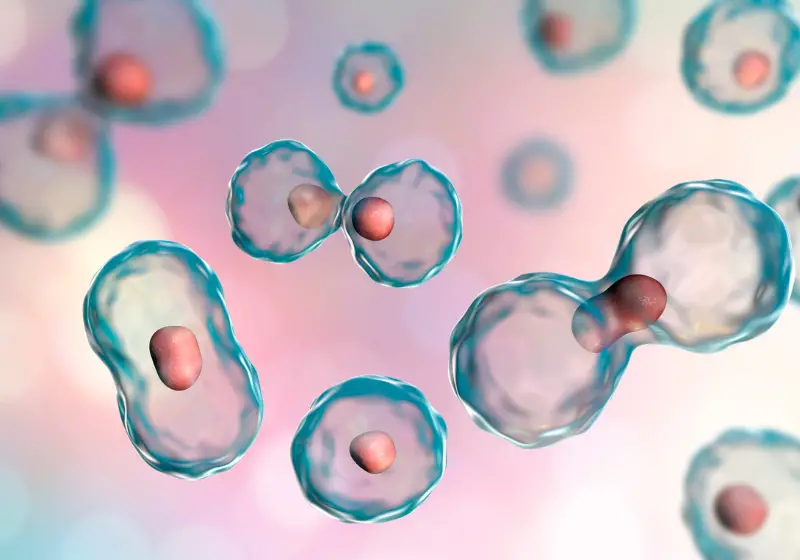
As a fascinating species of deep-sea hydrothermal-vent snail, the volcano snail or Chrysomallon squamiferum is a marine gastropod mollusc in the family Peltospiridae. To understand their unique life cycles and biological dynamics, let’s delve into this snail’s reproduction and lifespan better.
Regarding reproduction, it’s important to know that volcano snails are simultaneous hermaphrodites. This means they have both male and female reproductive organs and can self-fertilize. This lack of competition allows for a straightforward reproductive process. Volcano snails engage in a unique courtship ritual involving chemical and tactile communication to further ensure successful reproduction.
Regarding the lifespan of the volcano snail, there is limited information available. As a deep-sea dweller adapting to hydrothermal vents’ harsh and extreme environments, it’s challenging for researchers to observe and study their life cycles.
However, as more data about this amazing species is gathered, your understanding of the volcano snail’s reproductive habits and lifespan will grow. This, in turn, will provide new insights into their existence in those remarkable, high-temperature surroundings.
Remember to stay curious about these incredible creatures as they continue to surprise and amaze science with their resilience, adaptability, and unique biology. The volcano snail shows nature’s astonishing diversity and adaptability, even in extreme conditions.
Final Thoughts: Volcano Snail

In your exploration of the volcano snail, you’ve learned about a fascinating creature that can withstand extreme conditions. With its iron shell and scales, the volcano snail—or Chrysomallon squamiferum—can thrive in the white-hot hydrothermal vents of the Indian Ocean.
As you dive deeper into the world of marine biology and the unique characteristics of the volcano snail, it’s important to stay informed about ongoing research efforts. Understanding this rare creature and its environment can help us uncover the mysteries of the deep sea and the life that inhabits it.
To support the continued study of the volcano snail, you can turn to organizations such as the IUCN, which tracks information on threatened species’ status and population trends.
Conservation should be at your mind as you examine this endangered species. The volcano snail’s unique ability to withstand harsh environments makes it a valuable resource for researchers, who may be able to apply its adaptations to other fields such as biotechnology and medical research.
By promoting conservation and increasing our understanding of the Chrysomallon squamiferum, you can contribute to protecting this rare species and its habitat.
As you continue to gather knowledge on the volcano snail, remember to approach the topic with a confident, clear, knowledgeable, and neutral tone. Recognizing the importance of accurate information and reliable sources in your pursuit of understanding is essential. In doing so, you’ll become a well-informed advocate for conserving this amazing gastropod and its marine environment.
Frequently Asked Questions
How long is the lifespan of volcano snails?
The lifespan of volcano snails is not well-documented due to the extreme environments they inhabit. However, more research is needed to determine their precise lifespan, considering their unique characteristics and the inhospitable conditions they endure.
What allows volcano snails to survive extreme conditions?
Volcano snails, or Scaly-foot Gastropods, have unique adaptations that allow them to survive in extreme conditions. They possess a remarkable iron-plated shell and scales, providing a protective armor against predatory attacks and harsh environments1. Their ability to withstand high temperatures and pressure in the deep sea is a testament to the resilience of these creatures.
What is the composition of volcano snail shells?
The shell of a volcano snail is composed of iron sulfide, specifically greigite1. This chemical compound gives their shell and scales a dark black appearance and acts as a protective armor against the harsh environmental conditions they encounter. The incorporation of iron into their exoskeleton makes volcano snails unique among known animal species.
What is the habitat of volcano snails?
Volcano snails inhabit deep-sea hydrothermal vent ecosystems, specifically those located in the Indian Ocean2. These environments are characterized by extremely high temperatures, pressure, and chemical concentrations, making them very hostile for most life forms. However, it is in these depths that volcano snails have been able to thrive.
Are volcano snails considered rare species?
Yes, volcano snails are considered a rare species. Their unique habitat, deep within hydrothermal vents, makes them difficult to find and study. Additionally, the volcano snail is endangered due to its limited range, highly specialized habitat requirements, and potential threats from human activities such as deep-sea mining1.
Can volcano snails withstand lava exposure?
While no direct evidence confirms that volcano snails can withstand direct exposure to lava, their ability to thrive in extreme temperatures and pressure found within hydrothermal vents suggests they possess a high degree of tolerance to heat2. It is important to note that hydrothermal vents’ environment differs from direct lava exposure, so more research is needed to determine the extent of their heat resistance.

![How Big Do Assassin Snails Get? [Full Guide To Healthy Assassin Snails]](https://allourcreatures.com/wp-content/uploads/2021/11/assassin-snails-768x519.jpg)

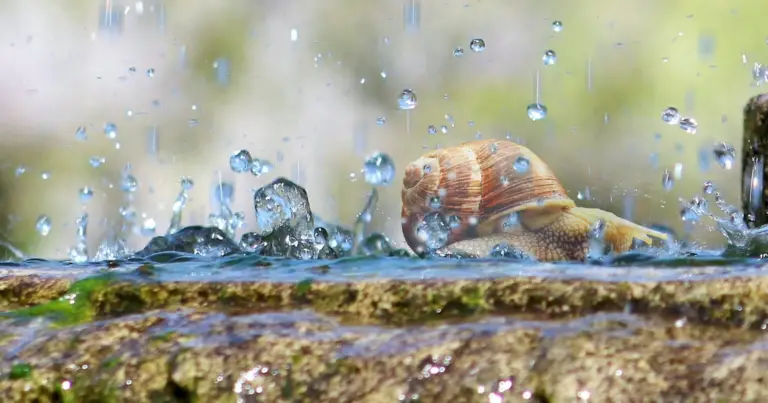
![What Do Apple Snails Eat? [Full Guide]](https://allourcreatures.com/wp-content/uploads/2021/10/what-do-apple-snails-eat-768x512.jpg)
![What Do Zebra Snails Eat? [Full Guide]](https://allourcreatures.com/wp-content/uploads/2021/10/bigstock-Spotted-Nerite-Snail-neritina-402430379.jpg)
